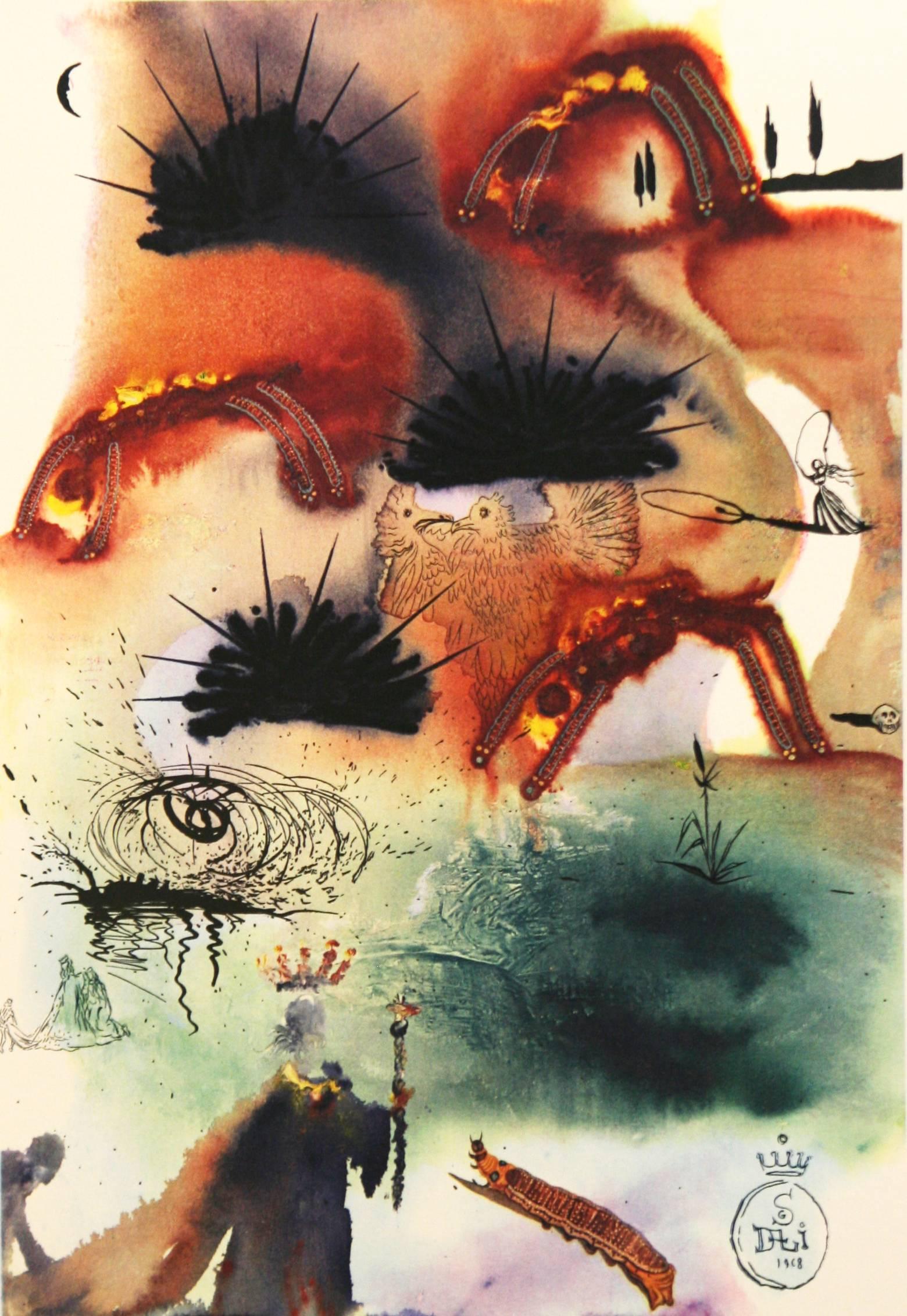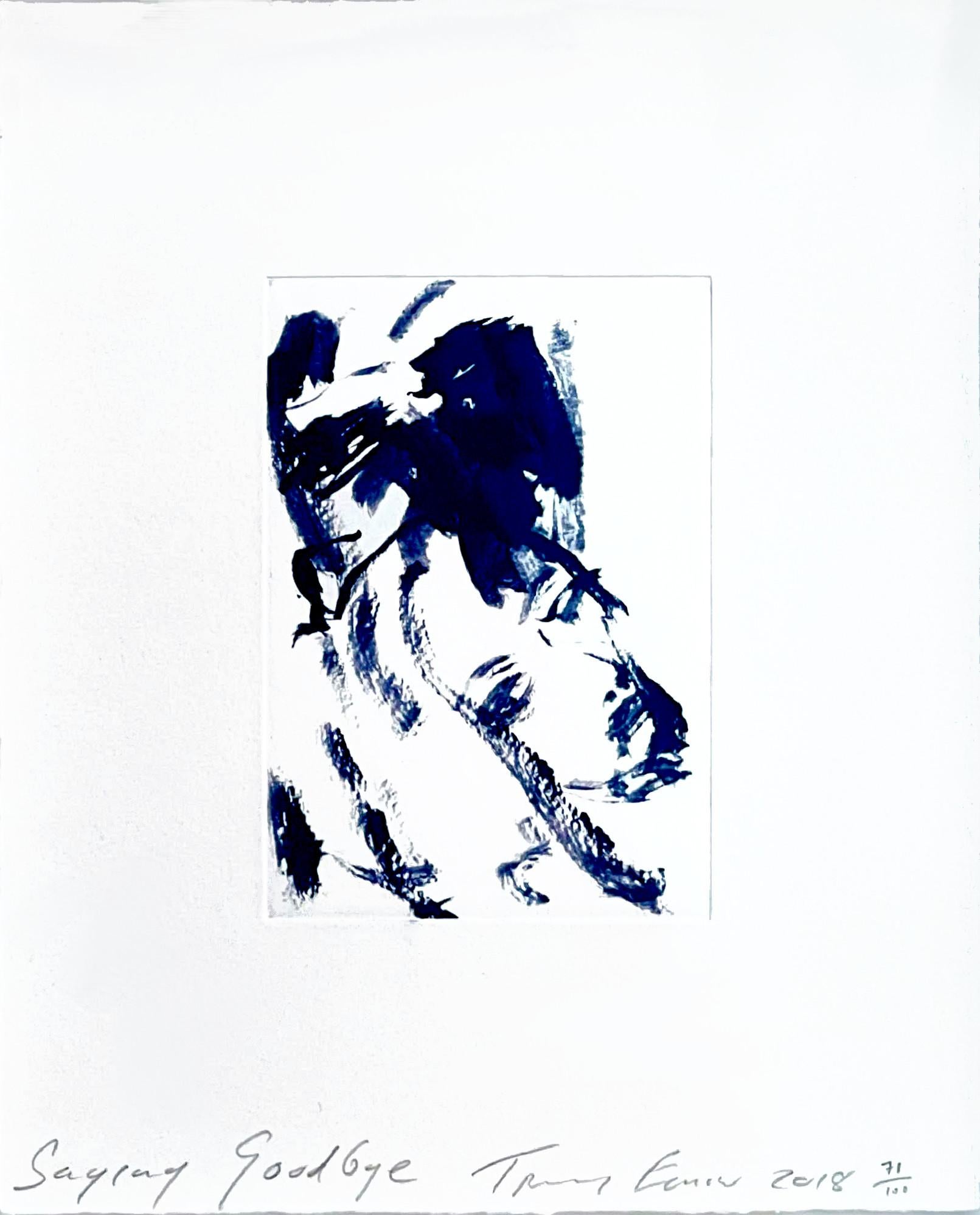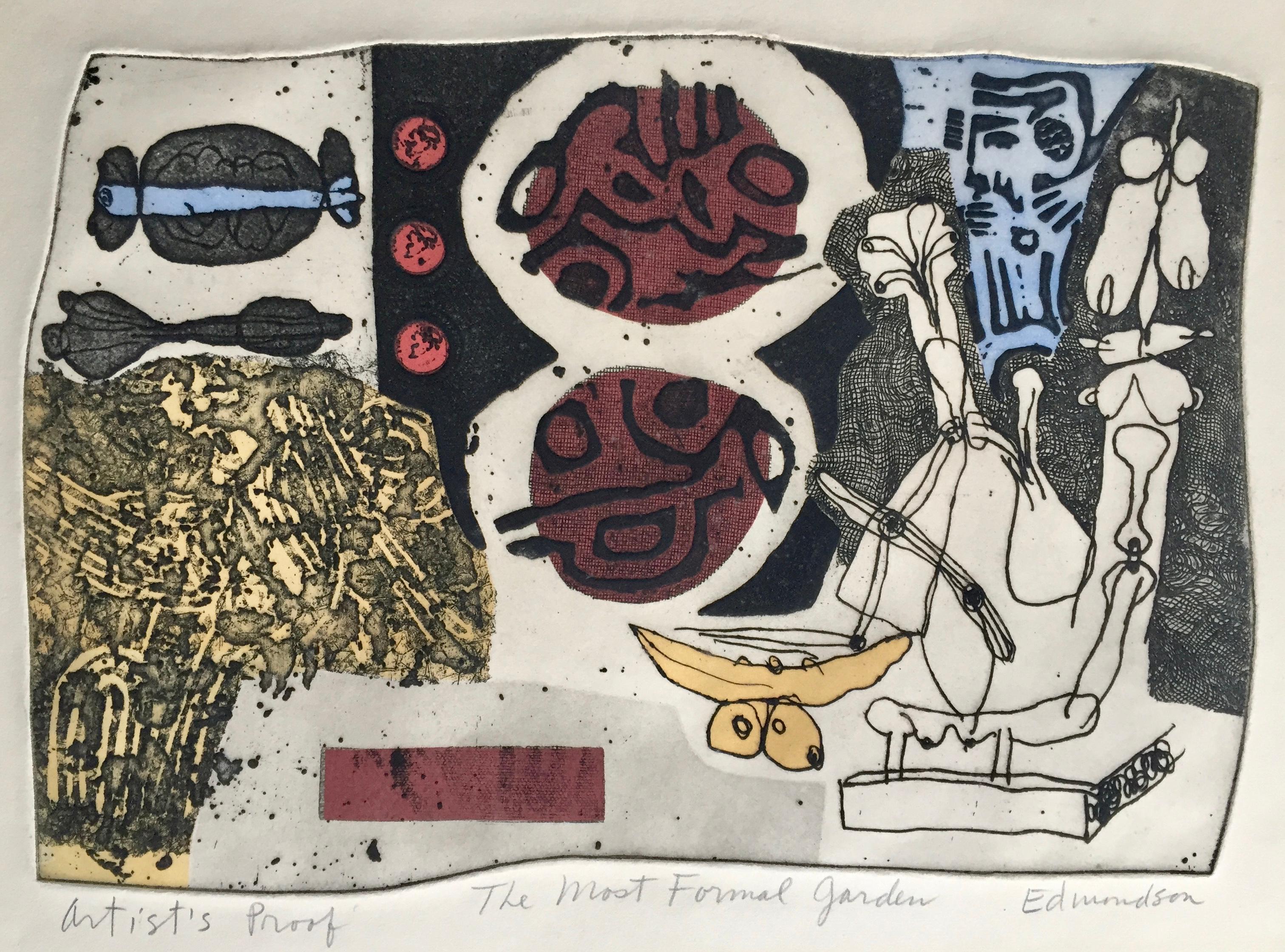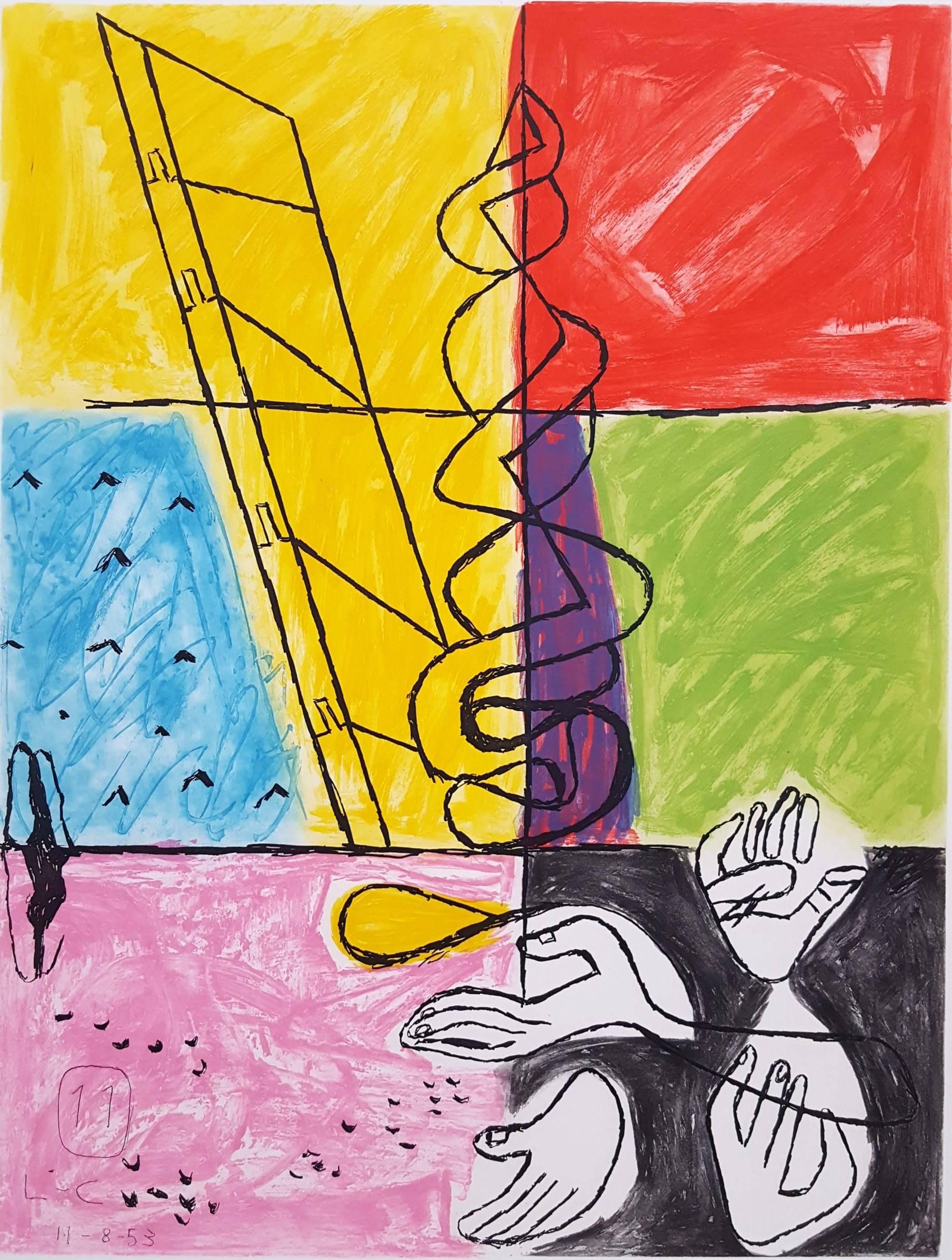Items Similar to 'Child and Seeing Hands' — 1970, after the artist's 1948 Surrealist work
Want more images or videos?
Request additional images or videos from the seller
1 of 3
Hans Bellmer'Child and Seeing Hands' — 1970, after the artist's 1948 Surrealist work1970
1970
About the Item
Hans Bellmer, 'Child and Seeing Hands', photogravure and engraving, edition 9, 1970. Flahutez 4-9. Signed by the artist and numbered '41/90' in pencil. A superb, richly-inked impression, on off-white Van Gelder Zonen laid paper; the full sheet with margins (2 5/8 to 3 1/2 inches), in excellent condition. Archivally matted to museum standards, unframed.
Image size 6 13/16 x 8 3/4 inches (173 x 222 mm); sheet size 13 x 14 1/16 inches (330 x 357 mm).
After a gouache drawing created by the artist in 1948, now in the collection of the Art Institute of Chicago.
ABOUT THE ARTIST
Hans Bellmer (1902–1975) was a photographer, sculptor, writer, and painter associated with the Surrealist movement. Born in Katowice, Poland, Bellmer was coerced by his overbearing father into working at a steel factory and a coal mine, even after passing university entrance exams. He began studies in engineering at the Technische Hochschule in Berlin but left to pursue his interest in art and politics. Bellmer became close to George Grosz, one of his drawing instructors, whose critical perspective on society strongly influenced Bellmer’s studies and interests.
In 1924, Bellmer worked as a book printer and illustrator at Malik Verlag, where he demonstrated his artistic ability, contributing drawings to Dadaist novels. In the late 1920s, Bellmer began traveling, visiting France, Italy, and Tunisia.
Bitterly opposed to the rise of Fascism and the Nazi regime in the early 1930s, he stopped working in protest, refusing to support the state. Partly influenced by Jacques Offenbach’s (1819-1880) final opera, The Tales of Hoffmann, where the hero falls in love with a realistic life-size mechanical doll, Bellmer built his first Doll in 1933-4. An articulated construction of wood, plaster, metal rods, nuts, and bolts representing a young girl, it embodied qualities of the archetypal surrealist object: coupled attraction and aversion, subversion and eroticism, sadism and fetishism.
Bellmer photographed the doll in a series of erotic postures, publishing a collection of 10 of these images, accompanied by text, as 'Die Puppe' in 1934. He submitted a group of his photographs to the Parisian Surrealist magazine 'Le Minotaure', the publication of which confirmed his place as an innovator within the Surrealist movement. Bellmer’s dolls (one of which he made with a large, bulbous abdomen and two hinged pelvises) often appear fragmented and mangled as though appendages had been detached and rearranged. They are simultaneously naturalistic and surreal, evoking emotional responses from recognition and excitement to anxiety and revulsion.
Bellmer moved to Paris in 1938 and continued to create his uniquely sensitive, provocative works featuring the themes of the subconscious, dreams, sexuality, lust, and death. His first solo exhibition was in 1943 at the bookstore Librairie Trentin in Toulouse, France. Bellmer’s work has since been shown in various museums and galleries worldwide, including the Whitechapel Gallery in London, the Neue Nationalgalerie in Berlin, and The Museum of Modern Art in New York City.
Bellmer's graphic works are held in numerous museum collections, including the Art Institute of Chicago; The Cleveland Museum of Art; The Israel Museum, Jerusalem; The Metropolitan Museum of Art; Minneapolis Institute of Art; The Museum of Fine Arts, Houston; Museum of Modern Art; Portland Art Museum; Princeton University Art Museum; and the Victoria and Albert Museum, London.
- Creator:Hans Bellmer (1912 - 1975, German)
- Creation Year:1970
- Dimensions:Height: 6.82 in (17.33 cm)Width: 8.75 in (22.23 cm)
- Medium:
- Movement & Style:
- Period:1670-1679
- Condition:
- Gallery Location:Myrtle Beach, SC
- Reference Number:
About the Seller
5.0
Recognized Seller
These prestigious sellers are industry leaders and represent the highest echelon for item quality and design.
Platinum Seller
These expertly vetted sellers are 1stDibs' most experienced sellers and are rated highest by our customers.
Established in 1995
1stDibs seller since 2016
254 sales on 1stDibs
Typical response time: 1 hour
Associations
International Fine Print Dealers Association
- ShippingRetrieving quote...Ships From: Myrtle Beach, SC
- Return PolicyA return for this item may be initiated within 7 days of delivery.
More From This SellerView All
- 'European Landscape' —Mid-century American SurrealismBy Lawrence KupfermanLocated in Myrtle Beach, SCLawrence Kupferman, 'European Landscape', drypoint, edition 50, 1942. Signed, dated, titled, and numbered '7/50' in pencil. A superb, finely nuanced impression, on cream wove paper; the full sheet with margins (1 to 1 3/4 inches); in excellent condition. Image size 10 7/8 x 13 3/8 inches; sheet size 13 1/8 x 16 1/2 inches. Archivally matted to museum standards, unframed. An impression of this work is included in the permanent collection of the Syracuse University Art Museum. ABOUT THE ARTIST Lawrence Kupferman (1909 - 1982) was born in the Dorchester neighborhood of Boston and grew up in a working-class family. He attended the Boston Latin School and participated in the high school art program at the Museum of Fine Arts, Boston. In the late 1920s, he studied drawing under Philip Leslie Hale at the Museum School—an experience he called 'stultifying and repressive'. In 1932 he transferred to the Massachusetts College of Art, where he first met his wife, the artist Ruth Cobb. He returned briefly to the Museum School in 1946 to study with the influential expressionist German-American painter Karl Zerbe. Kupferman held various jobs while pursuing his artistic career, including two years as a security guard at the Museum of Fine Arts, Boston. During the 1930s he worked as a drypoint etcher for the Federal Art Project, creating architectural drawings in a formally realistic style—these works are held in the collections of the Fogg Museum and the Smithsonian American Art Museum. In the 1940s he began incorporating more expressionistic forms into his paintings as he became progressively more concerned with abstraction. In 1946 he began spending summers in Provincetown, Massachusetts, where he met and was influenced by Mark Rothko, Hans Hofmann, Jackson Pollock, and other abstract painters. At about the same time he began exhibiting his work at the Boris Mirski Gallery in Boston. In 1948, Kupferman was at the center of a controversy involving hundreds of Boston-area artists. In February of that year, the Boston Institute of Modern Art issued a manifesto titled 'Modern Art and the American Public' decrying 'the excesses of modern art,' and announced that it was changing its name to the Institute of Contemporary Art (ICA). The poorly conceived statement, intended to distinguish Boston's art scene from that of New York, was widely perceived as an attack on modernism. In protest, Boston artists such as Karl Zerbe, Jack Levine, and David Aronson formed the 'Modern Artists Group' and organized a mass meeting. On March 21, 300 artists, students, and other supporters met at the Old South Meeting House and demanded that the ICA retract its statement. Kupferman chaired the meeting and read this statement to the press: “The recent manifesto of the Institute is a fatuous declaration which misinforms and misleads the public concerning the integrity and intention of the modern artist. By arrogating to itself the privilege of telling the artists what art should be, the Institute runs counter to the original purposes of this organization whose function was to encourage and to assimilate contemporary innovation.” The other speakers were Karl Knaths...Category
1940s Surrealist Abstract Prints
MaterialsDrypoint
- 'Blue Eyes' — 1970s Erotic SurrealismBy Hans BellmerLocated in Myrtle Beach, SCHans Bellmer, 'Blue Eyes', engraving and drypoint, edition 99, 1971. Flahutez 89. Signed and numbered '74/99' in pencil. A fine impression, on Arches cream wove paper; the full sheet...Category
1960s Surrealist Abstract Prints
MaterialsEngraving, Drypoint
- 'The Modest Rose' — 1970s Erotic SurrealismBy Hans BellmerLocated in Myrtle Beach, SCHans Bellmer, 'The Modest Rose', engraving and drypoint, edition 99, 1971. Signed and numbered '99/99' in pencil. A fine, richly-inked impression, on Arches cream wove paper; the ful...Category
1960s Surrealist Abstract Prints
MaterialsEngraving, Drypoint
- Untitled (Two Nudes) — 1970s Erotic SurrealismBy Hans BellmerLocated in Myrtle Beach, SCHans Bellmer, Untitled (Two Nudes), engraving and drypoint, 1971, edition 99. Signed and numbered '94/99' in pencil. A fine impression, on Arches cream wove paper; the full sheet wit...Category
1960s Surrealist Abstract Prints
MaterialsEngraving, Drypoint
- Surrealist Abstraction IIBy Gerome KamrowskiLocated in Myrtle Beach, SCGerome Kamroski, Untitled 'Surrealist Abstraction', drypoint, 1946, edition 28 (editioned in 1996). Signed, dated '1946, ed 1996", and numbered '7/28' in pencil. A fine impression, ...Category
1940s Surrealist Abstract Prints
MaterialsDrypoint
- 'Evening' —Mid-Century American SurrealismBy Edward August LandonLocated in Myrtle Beach, SCEdward Landon, 'Evening', color serigraph, 1958, edition 25, Ryan 71. Signed, titled, and annotated 'Ed. 25' in pencil. A fine impression, with fresh colors, on cream wove paper; the...Category
Mid-20th Century Surrealist Abstract Prints
MaterialsScreen
You May Also Like
- The Lobster’s Quadrille Salvador Dali's Alice in Wonderland 1969By Salvador DalíLocated in Paonia, COThe Lobsters Quadrille is from Lewis Carroll's Alice's Adventures in Wonderland as interpreted by Salvador Dali and published by Maecenas ( a Random House imprint) 1969 and is from the portfolio of one signed etching in colors and 12 heliogravures with remarque, hors-texte, title page, and text. The frontis page etching is signed in pencil by the artist. The Lobsters Quadrille is in excellent condition. It is a limited Edition 764/2500 signed in the plate by Dali on Mandeure paper. Photogravure, also known as heliogravure, is a complex intaglio printing process that photographically transfers an image to a plate and then to the page. After the image has been transferred to the plate, it is then etched onto it before being printed onto paper. The results are of incredibly high-quality.photogravure in its mature form was not developed until the late 1870s by Czech painter Karel Klíč. He first included pigment paper in the process of photo technical transfer in 1879 and is regarded as the inventor of photogravure process.There are two steps to the process. Firstly, a copper plate is coated with a light-sensitive gelatine tissue which is then exposed to the light from a photographic image. The gelatine hardens where the light falls, and remains soft where light doesn’t. Following this step, the plate is etched down to different depths according to the hardness of the gelatine. The result of this is a highly defined intaglio plate that can reproduce in great detail the tones of the original photographic image. The printing plate is etched to a different depth according to the finest tonal values, which can be printed after removal of the remaining gelatine using the gravure printing process. Salvador Domingo Felipe Jacinto Dalí i Domènech...Category
1960s Surrealist Abstract Prints
MaterialsPhotogravure
- Saying GoodbyeBy Tracey EminLocated in New York, NYTracey Emin Saying Goodbye, 2018 Polymer gravure on Somerset 300gsm Pencil signed, titled, dated, and numbered 71/100 by Tracey Emin on the front Frame Included: Elegantly floated an...Category
2010s Pop Art Portrait Prints
MaterialsEngraving, Photogravure
- THE MOST FORMAL GARDENBy Leonard EdmondsonLocated in Santa Monica, CALEONARD EDMONDSON (1916 – 2002) THE MOST FORMAL GARDEN, c. 1965 Color intaglio signed titled and annotated “Artist’s Proof" Irregular platemark 10 ¼ x14...Category
1960s Surrealist Abstract Prints
MaterialsIntaglio
- Unité, Planche 16 (Set of 2) /// Surrealism Modern Art Le Corbusier AbstractBy Le CorbusierLocated in Saint Augustine, FLArtist: Le Corbusier (Charles-Édouard Jeanneret) (Swiss-French, 1887-1965) Title: "Unité, Planche 16" (Set of 2) Portfolio: Unité *Signed by Le Corbusier in pencil lower right. It is...Category
1960s Surrealist Abstract Prints
MaterialsEtching, Aquatint, Intaglio
- Unité, Planche 8 (Set of 2) /// Surrealism Modern Art Le Corbusier AbstractBy Le CorbusierLocated in Saint Augustine, FLArtist: Le Corbusier (Charles-Édouard Jeanneret) (Swiss-French, 1887-1965) Title: "Unité, Planche 8" (Set of 2) Portfolio: Unité *Signed by Le Corbusier in pencil lower right. It is ...Category
1960s Surrealist Abstract Prints
MaterialsEtching, Aquatint, Intaglio
- Unité, Planche 15 (Set of 2) /// Surrealism Modern Art Le Corbusier AbstractBy Le CorbusierLocated in Saint Augustine, FLArtist: Le Corbusier (Charles-Édouard Jeanneret) (Swiss-French, 1887-1965) Title: "Unité, Planche 15" (Set of 2) Portfolio: Unité *Signed by Le Corbusier in pencil lower right. It is...Category
1960s Surrealist Abstract Prints
MaterialsEtching, Aquatint, Intaglio





